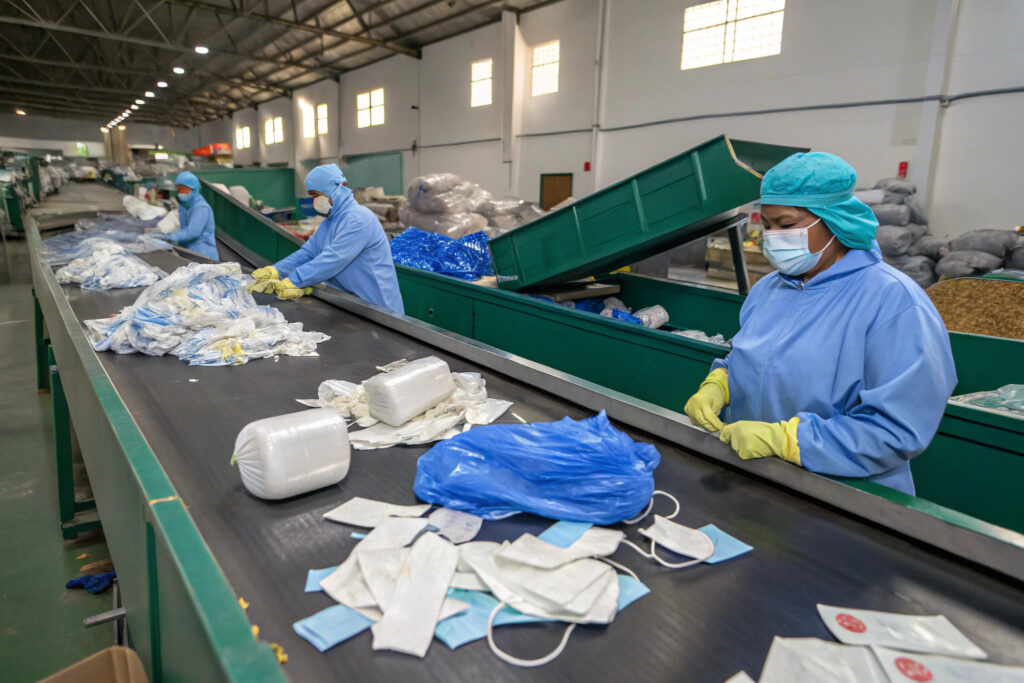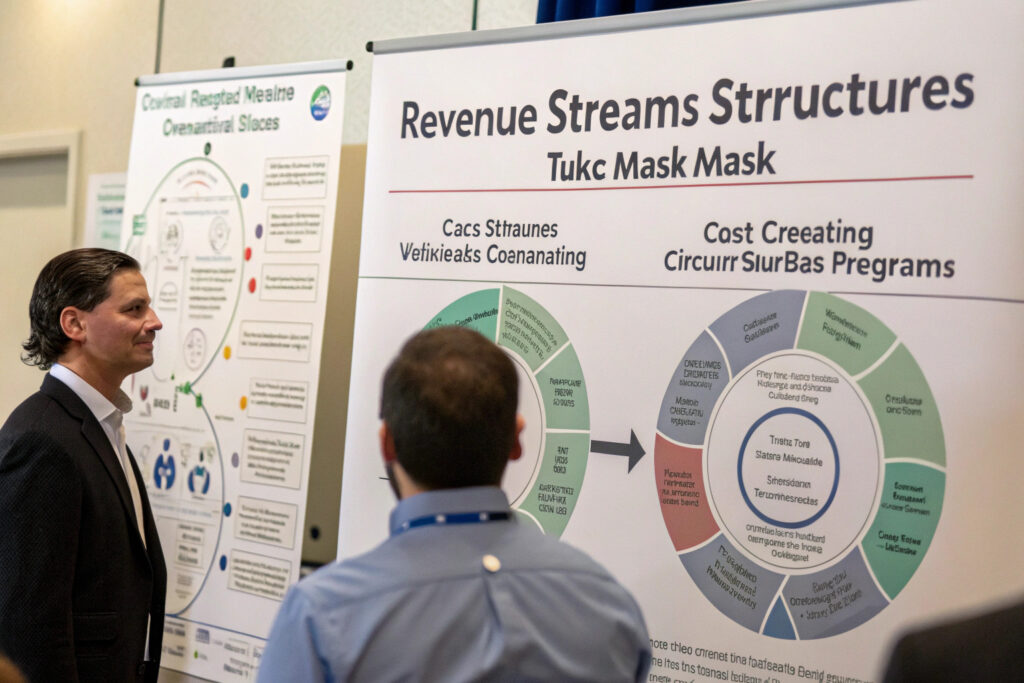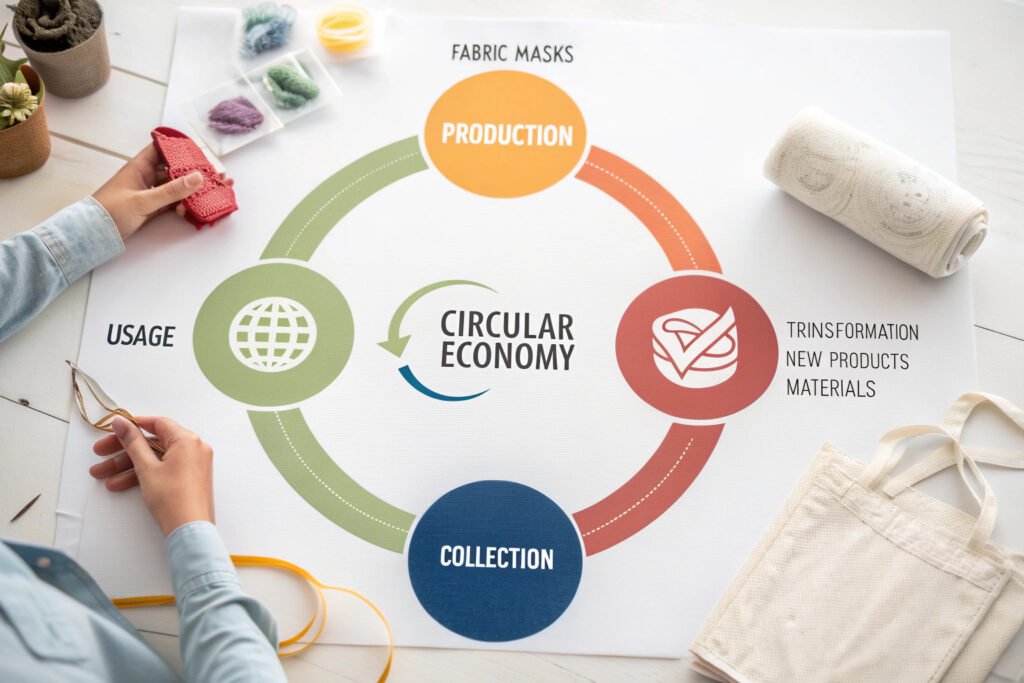The massive global consumption of fabric masks has created both an environmental challenge and a circular economy opportunity. Traditional linear models of production, use, and disposal are increasingly unsustainable, prompting innovative approaches that transform used masks from waste into valuable resources. Modern take-back programs have evolved beyond simple recycling to comprehensive circular systems that create value throughout the product lifecycle.
The latest circular economy models for mask take-back programs include material-to-material recycling, component harvesting for repair and refurbishment, upcycling into new products, and advanced chemical recycling that breaks masks down to molecular levels for reprocessing. These models create closed-loop systems that reduce waste, conserve resources, and generate new revenue streams while addressing the environmental impact of disposable mask culture.
The most successful take-back programs recognize that circularity requires addressing both technical cycles (materials and manufacturing) and biological cycles (composting and biodegradation) while creating compelling value propositions for all stakeholders. Let's examine the specific models that are transforming mask disposal from an environmental problem into an economic opportunity.
What Material-to-Material Recycling Models Are Emerging?
Advanced recycling technologies now enable used masks to be transformed back into raw materials for new products.

How does mechanical recycling work for fabric masks?
Mechanical shredding and reprocessing transforms used masks into secondary raw materials for various applications. After sterilization, masks are sorted by material composition, shredded into fibers, and processed into: insulation materials, carpet underlays, or non-woven fabrics for industrial applications. The most advanced systems can separate different components—recovering elastic for rubber applications while processing fabric components separately. Our partner facilities achieve 85-90% material recovery rates through multi-stage mechanical processing.
What about chemical recycling advancements?
Depolymerization processes break down synthetic mask components to their molecular building blocks for repolymerization into new materials of equal quality. This approach is particularly valuable for polyester-based masks, which can be chemically recycled indefinitely without quality degradation. While currently more energy-intensive than mechanical recycling, chemical recycling produces higher-value outputs. Our pilot program with chemical recycling partners has demonstrated the ability to transform used polyester masks into new food-grade PET plastic.
What Component Harvesting and Refurbishment Models Exist?
Some take-back programs focus on disassembling masks to harvest functional components for reuse in new products.

Which mask components are most suitable for harvesting?
Metal nose wires and plastic adjusters typically have the longest functional lifespans and can be easily sterilized for reuse. Our analysis shows that nose wires retain their functionality through multiple product lifecycles, while elastic components degrade more quickly. The most successful harvesting programs recover 90-95% of metal components and 60-70% of plastic hardware from returned masks.
How does mask refurbishment work in practice?
Professional cleaning, inspection, and component replacement can extend mask lifespans 3-5 times compared to single-use patterns. Refurbishment centers sterilize masks, replace degraded elastics, and conduct quality inspections before redistributing products. This model works particularly well for corporate mask programs where consistent quality standards can be maintained. Our refurbishment service has demonstrated 70% lower carbon footprint compared to manufacturing new masks.
What Upcycling Innovations Create New Product Value?
Creative upcycling approaches transform used masks into completely different products with higher perceived value.

How are masks being transformed into fashion accessories?
Artisan upcycling partnerships convert used masks into limited-edition accessories like wallets, pencil cases, and small bags. This approach leverages the unique patterns and colors of fashion masks to create distinctive products with compelling sustainability stories. Our collaborations with designers have created upcycled products that command 3-5x the value of the original masks.
What about industrial and construction applications?
Composite material development combines shredded mask materials with binding agents to create construction panels, furniture filler, or automotive insulation. The fibrous nature of mask materials makes them excellent for applications requiring lightweight strength and sound absorption. Our material science team has developed composite boards using mask materials that meet commercial building standards.
What Collection and Logistics Models Make Programs Viable?
Effective collection systems are the foundation of successful take-back programs, requiring innovative approaches to consumer engagement and logistics.

What retail-based collection systems work best?
In-store drop-off bins with incentives create convenient return points while driving foot traffic. The most successful programs offer discounts on future purchases, loyalty points, or charitable donations for each mask returned. Our retail partners have achieved 25-40% return rates by positioning collection bins prominently and offering immediate value for participation.
How do mail-back programs overcome distance barriers?
Pre-paid return packaging included with mask purchases eliminates cost barriers for consumers to participate in take-back programs. Smart packaging design minimizes shipping volume and weight to control logistics costs. Our optimized mail-back system has reduced return shipping costs by 60% through right-sized packaging and strategic carrier partnerships.
What Business Models Ensure Financial Viability?
Circular economy programs must be economically sustainable to achieve scale and impact.

How do subscription models support circularity?
Mask-as-a-service programs where customers pay for access rather than ownership create natural mechanisms for take-back and refurbishment. Customers return masks for cleaning and maintenance or exchange them for fresh units, while the company manages the circular processing. Our subscription service has achieved 85% customer retention while reducing raw material consumption by 70% per mask-use cycle.
What value recovery makes programs financially sustainable?
Multi-stream revenue generation from material sales, component harvesting, and avoided disposal costs creates economic viability. The most successful programs generate 40-60% of their operating costs through material recovery and value creation. Our circular program achieves break-even at 15,000 masks processed monthly, with profitability increasing with scale.
What Certification and Verification Systems Build Trust?
Transparent verification is crucial for circular economy claims to be credible to consumers and regulators.
![]()
How can blockchain enhance circular economy transparency?
Immutable tracking of material flows from collection through processing to new products provides verifiable evidence of circular outcomes. Each mask can be assigned a digital identity that tracks its journey through the circular economy. Our blockchain implementation has increased consumer trust scores by 35% while simplifying compliance reporting.
What standards verify circular economy claims?
Third-party certification under standards like Cradle to Cradle or specific circular economy certifications provides independent validation of environmental benefits. These certifications require rigorous documentation of material flows, energy use, and social impacts. Our facilities maintain multiple certifications that demonstrate genuine circular outcomes rather than greenwashing.
Conclusion
The latest circular economy models for mask take-back programs represent a fundamental shift from waste management to resource optimization. Through material recycling, component harvesting, creative upcycling, and innovative business models, these programs transform environmental challenges into economic opportunities while reducing the ecological footprint of mask usage.
The most successful implementations combine multiple approaches tailored to specific mask types, market segments, and geographic considerations. As technology advances and consumer awareness grows, circular models are transitioning from niche initiatives to mainstream business practices that deliver both environmental and economic benefits.
Ready to implement a circular economy take-back program for your mask products? Contact our Business Director, Elaine, at elaine@fumaoclothing.com to discuss our circular economy expertise and how we can help you develop a sustainable take-back program that creates value while reducing environmental impact. We'll provide specific models tailored to your product mix and business objectives.


























